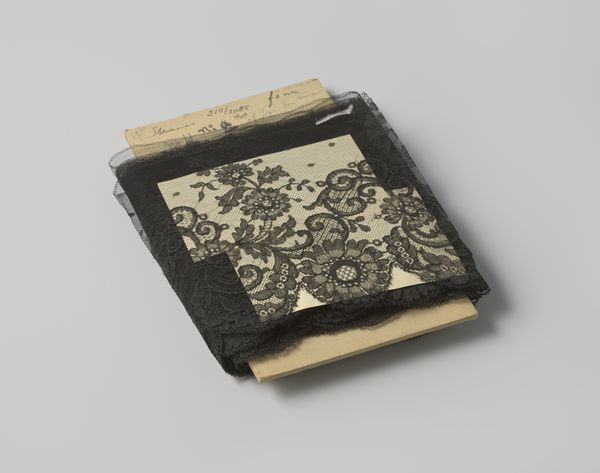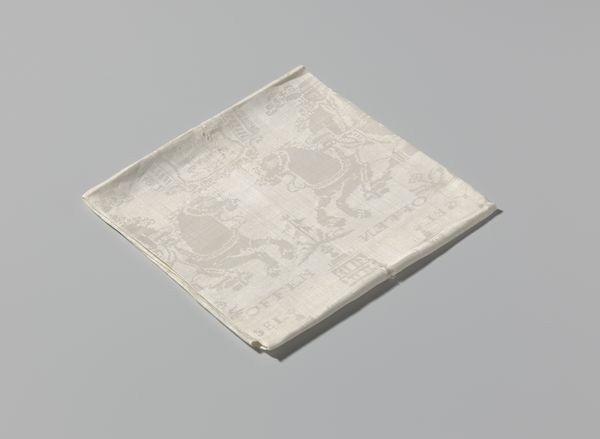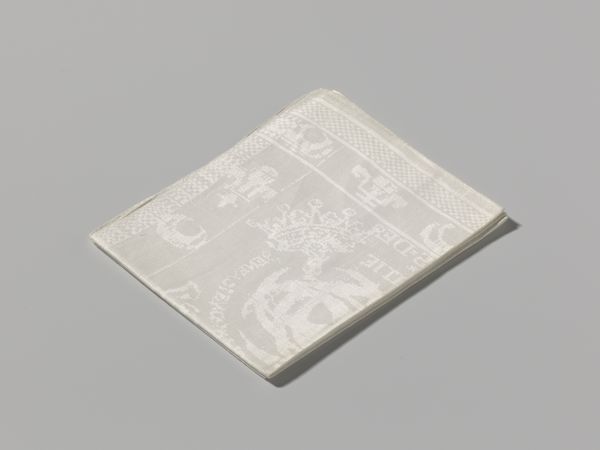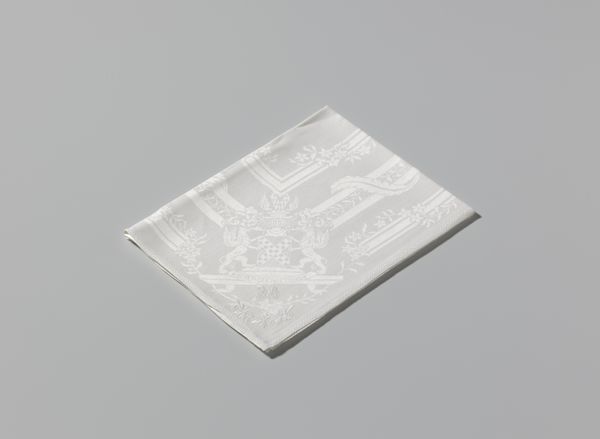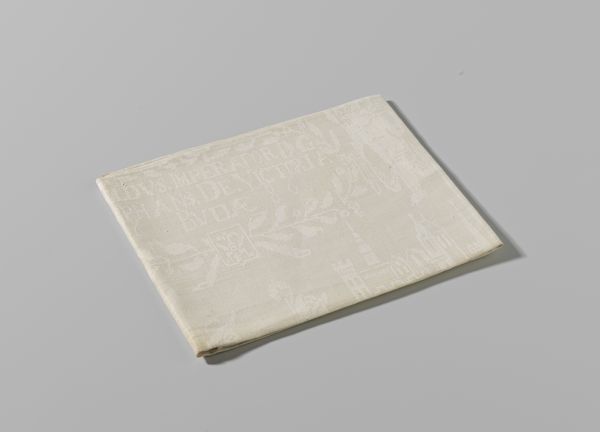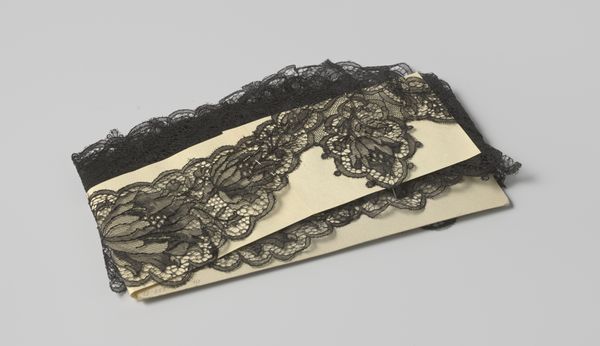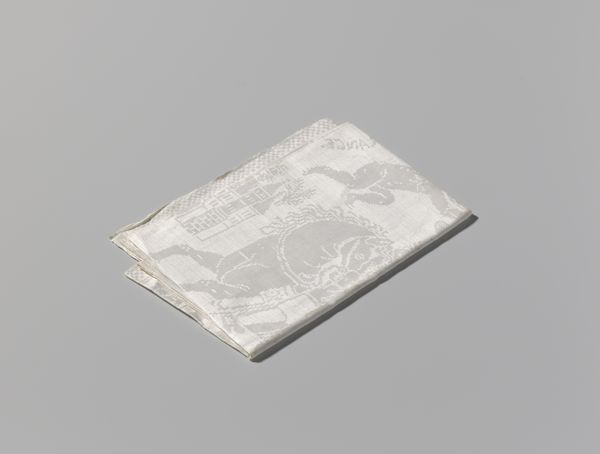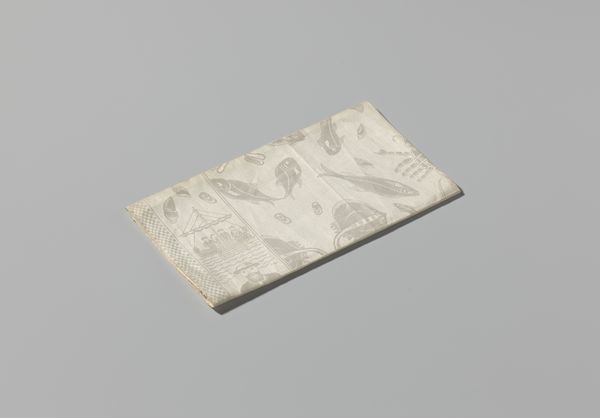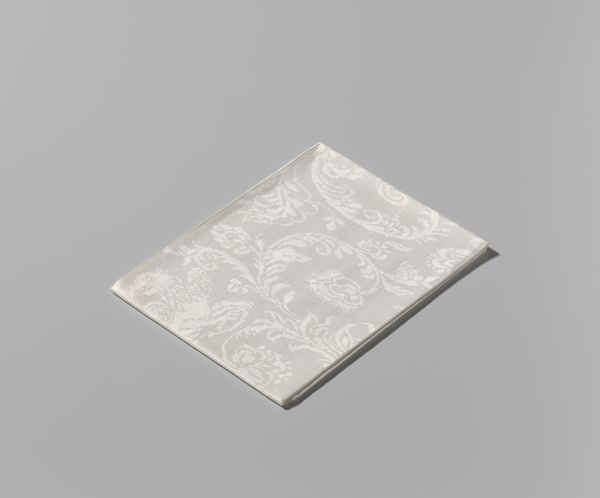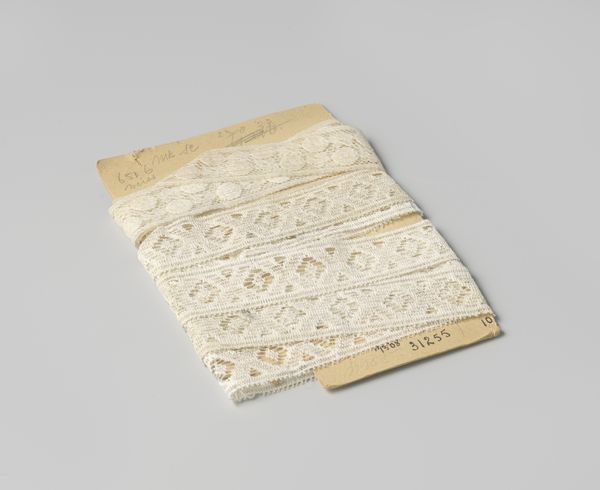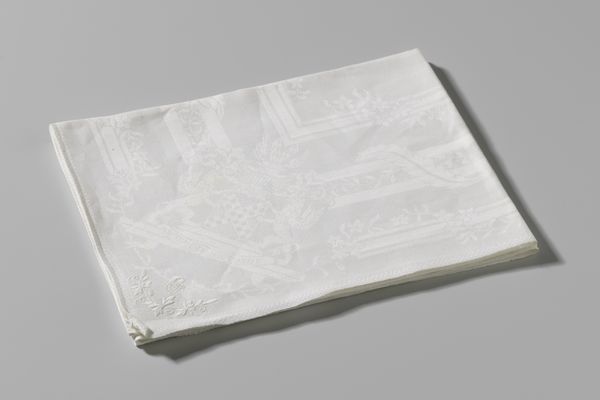
Tussenzetsel van zwarte machinale kant met doorlopend slingerend bladmotief, op karton c. 1925
0:00
0:00
textile
#
textile
#
geometric
#
decorative-art
Dimensions: width 4 cm, length 24 cm, width 14.9 cm
Copyright: Rijks Museum: Open Domain
Curator: Oh, I see it now! This lovely piece here, "Tussenzetsel van zwarte machinale kant met doorlopend slingerend bladmotief, op karton", is a sample of machine-made black lace from around 1925. It’s currently housed here at the Rijksmuseum. What are your first thoughts? Editor: Somber elegance! The black against the aged cardboard really makes it pop. There’s a Victorian mourning vibe mixed with a sort of... industrial precision in the repeated leaf pattern. It feels both romantic and, well, manufactured. A bit like a memory carefully packaged for sale. Curator: Manufactured memories...I like that. And indeed the duality is built right into the thing: that tension between nature depicted and machine production. Do you find any particular elements that really leap out in terms of symbolism or historical echoes? Editor: Absolutely. Black lace itself is a fascinating contradiction. Originally, of course, associated with high status, but here, in a post-industrial context, it hints at something a bit darker, doesn't it? Black became fashionable in dress partly from royalty moving from elaborate color and then being translated into mass mourning or more available darker colors. Here it has all the historical impact of tradition while losing the class and social elements of that tradition. Curator: Very astute, and exactly, and if you ask me the geometric consistency makes the floral pattern even more visually arresting: the leaves are recognizable, but slightly too even. And, you can picture this being churned out and attached as detail for nearly everything on a rack. The real democratization of "fancy." Editor: Yes, the ghosts of the Gilded Age are all up and through here, I find the lace’s intricate design really works like a visual bridge between tradition and the upcoming changes, of that inter-war period and new aesthetics being established in art deco. Curator: Well, it is just striking how a little material scrap speaks about so many shifts in society...makes you think. Editor: Exactly! And I love how the object asks more questions of ourselves than answers about it in the here and now, even decades after.
Comments
No comments
Be the first to comment and join the conversation on the ultimate creative platform.
